Once upon a time, there lived a brave general, feared by the very most because of his political and military ability. We are in Roman times, when the power of Scipio Africanus, fresh from his resounding victory over Hannibal during the Second Punic War, raged across Sicily.
The city of Palermo was a precious ally in the war against Carthage, so Scipio gifted the town with a representation of its so-called genius loci. Tall and vigorous, proudly wearing his crown while holding a dangerous snake to his chest: who is he, and what does he symbolize?

Who is the Genius of Palermo?
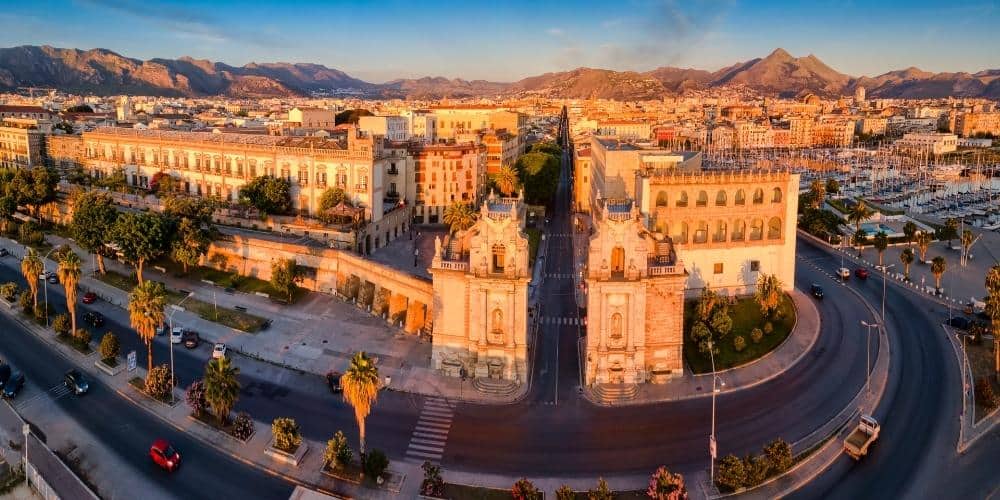
Through the centuries, there have been many assumptions about the identity of the Genius and its symbology. Still, the most accredited sees it as the personification of Palermo, with the snake as Scipio and the gratitude of the whole Roman people for the help given during the battles against Hannibal.
The Genius has also come to represent a sort of laic protector of the town, often associated with the original patron saint of Palermo, Rosalia.
The most important representations of the Genius of Palermo are eight, and you can find them all over the city. Here are some of the most significant historical locations in Palermo where to catch them.
The Genius of Piazza Rivoluzione
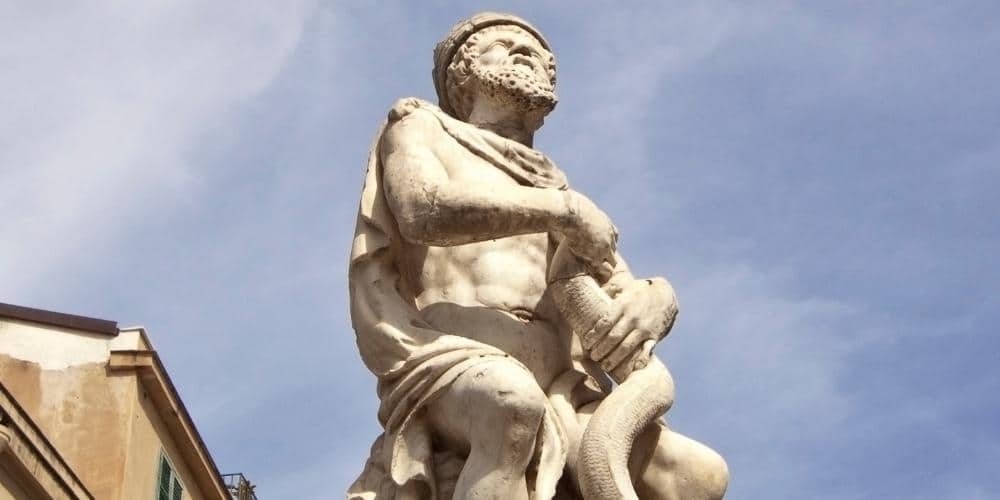
In the heart of Palermo nightlife, Piazza Rivoluzione, surrounded by pubs and other meeting places, there's one of the biggest sculptures of the Genius .
This statue is a symbol of Palermo's history. During the Risorgimento upsprings, the citizens gathered around it to protest against the Bourbons. The very name of the square that houses it is a tribute to the events of those years when the Genius became an emblem of struggle and freedom. The Bourbon government was even forced to remove the sculpture, which only returned to its place with the arrival of Garibaldi in 1860.
The Genius of the port
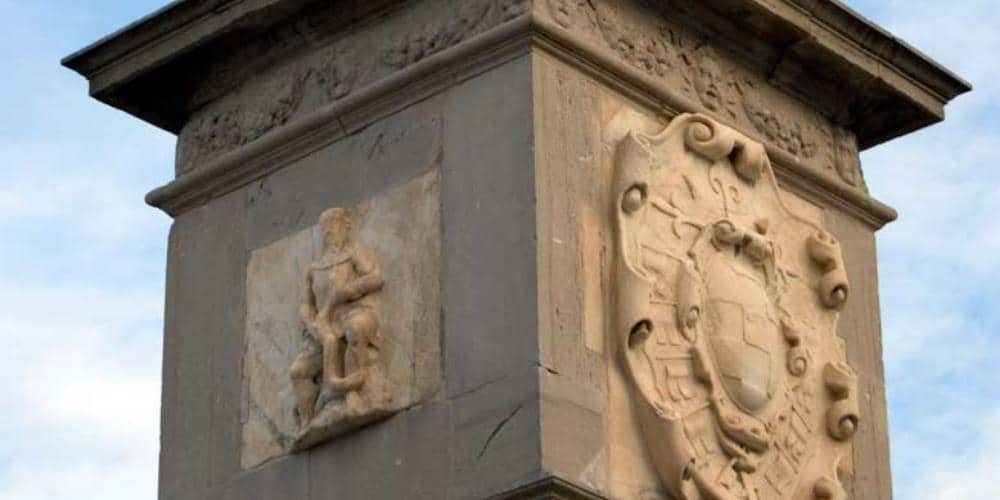
You can find the most ancient representation, Il Genio del Porto (16th century), near the port entrance in Via Emerico Amari. Point at the statue of the golden eagle: the high relief depicting the Genius is set in the base supporting it.
Photo credits: Fabrice de Nola - Own work, CC BY-SA 3.0
The Genius of the Vucciria
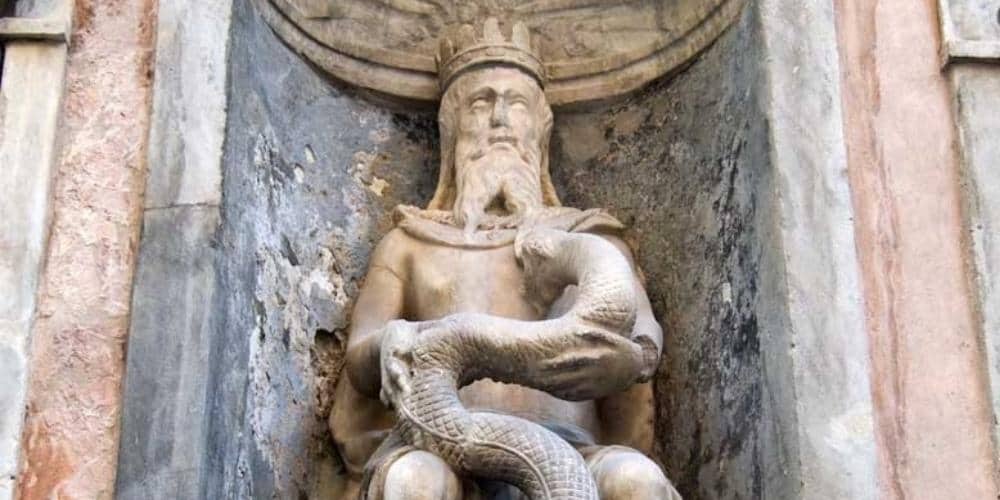
The Vucciria neighbourhood, a famous market during the day and a core of the nightlife in Palermo, hides a small niche in Vicolo Paterna containing a statue of the Genius of Palermo, recently restored.
The Genius of the Vucciria is a tribute by merchants - mostly Genoese, Amalfitans, Catalans and Pisans - to their adopted city. The Carrara marble statue dates from the 15th century and originally adorned a fountain in the Piazzetta del Garraffo. Its present location in a niche dates back to the 17th century, when the fountain was dismantled and the statue moved to its new site in the same square.
The Genius of the Isnello Palace
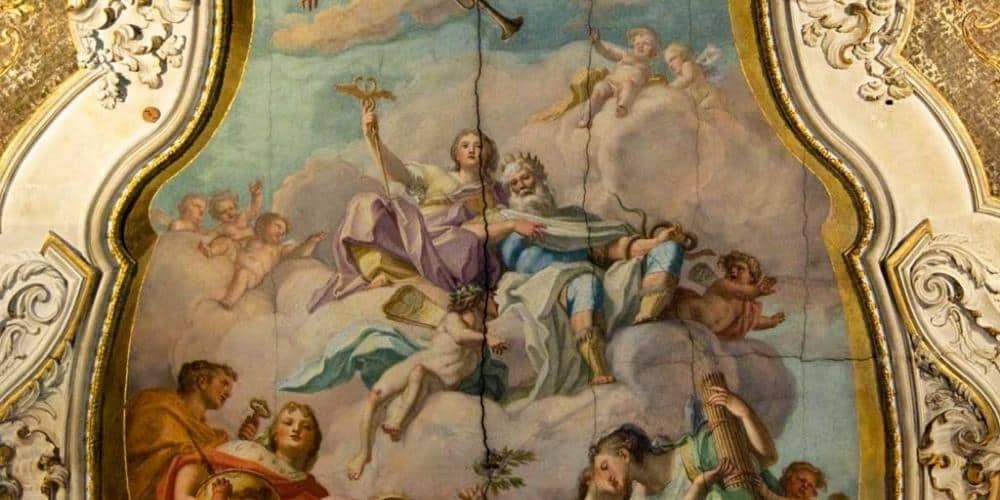
Of the eight most important representations, the only painting can be found in the suggestive Isnello Palace in Corso Vittorio Emanuele, really close to another famous spot in Palermo, Piazza Pretoria.
The place to admire the Genius of Palazzo Isnello is the magnificent ballroom of the 18th-century residence. Here, in the centre of the Apotheosis of Palermo, a fresco by Vito D'Anna and a masterpiece of Sicilian rococo, stands the figure we are learning to recognise: an elderly face, a full beard, a crown on his head and the inseparable snake by his side.
The Praetorian Palace Genius
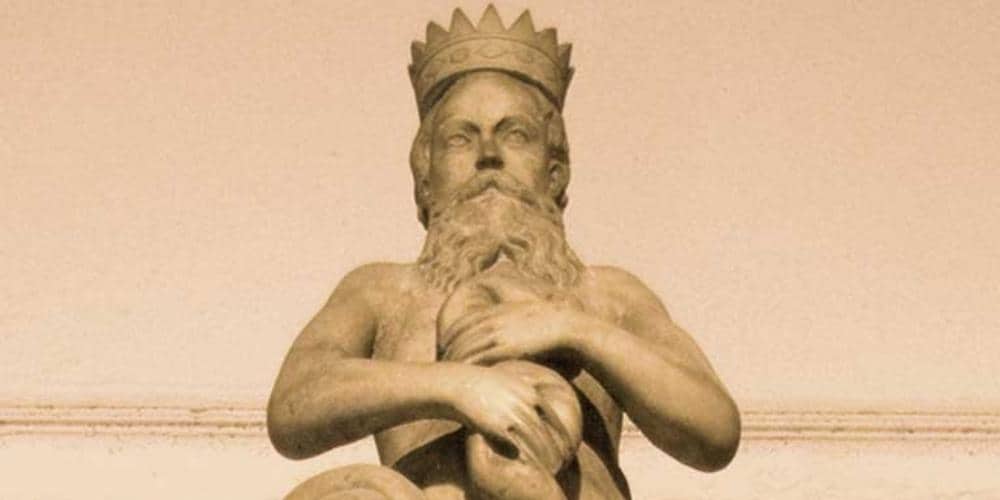
This sculpture, brought to light in 1596, is now displayed in the heart of the town's center, in one of the most renowned spots, also known as the headquarter of the Municipality of Palermo: Praetorian Palace.
Sicilians call it Palermu u Nicu (the small Palermo): the Genius of Palazzo Pretorio is a sculptural group located on the monumental staircase inside the palace. It consists of a central column surmounted by the statue of the Genius and two lateral figures, two pages, each holding a shield depicting the symbol of Palermo.
The Genius of Villa Giulia
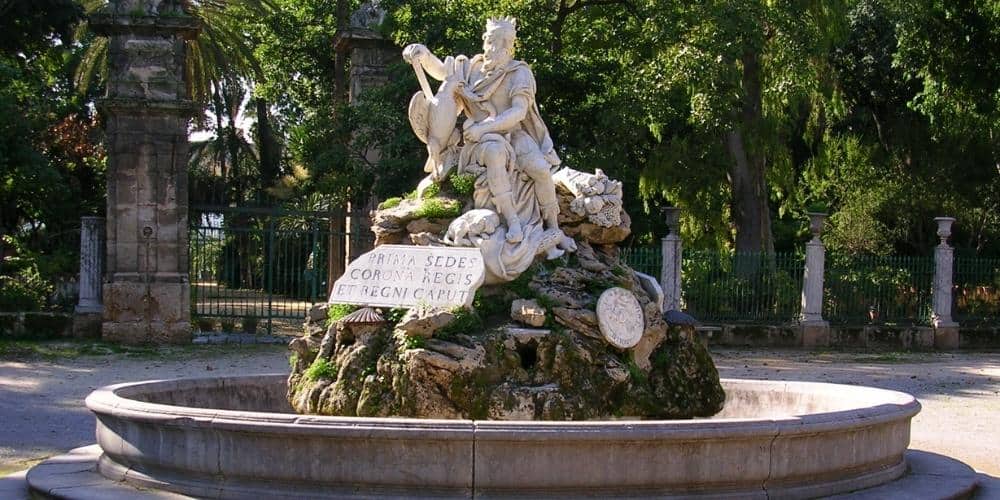
Realized in 1778, it is perhaps the most massive sculpture of the Genius, in the elegant venue of Villa Giulia, a few steps away from the Botanic Garden.
This 18th-century opera by Ignazio Marabitti adorns a refined fountain and, in some ways, is reminiscent of Vito D'Anna's fresco in Palazzo Isnello. Here, the vigorous figure in Roman armour is accompanied by an eagle, the symbol of Palermo, a sleeping dog, representing fidelity, and a cornucopia, signifying abundance.
Photo credits: Giuseppe ME - Own work, CC BY-SA 3.0
The mosaic in the Palatine Chapel
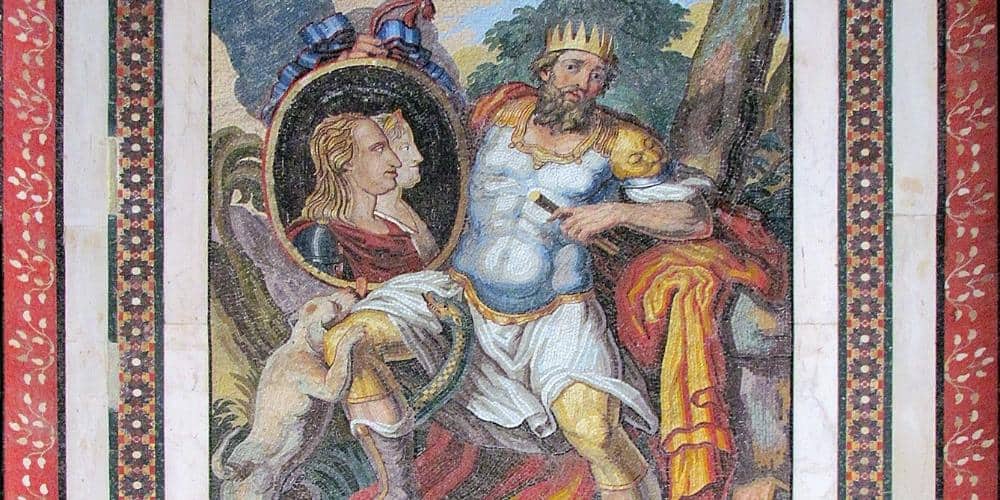
One of the most recent representations dates back to the XIX century and can be found at the entrance of one of the most famous Unesco Heritage spots in Sicily, the Palatine Chapel.
Described by Guy de Maupassant as 'the most beautiful church in the world', the Palatine Chapel in Palermo is an exquisite Byzantine-Norman structure dating from 1140 and part of the Norman Palace (Palazzo dei Normanni). The panel depicting the Genius is on the chapel's entrance. Pietro Casamassima realised the mosaic on the commission of Ferdinand I of Bourbon (the king and his wife, Maria Carolina, are also depicted in the opera).
The Genius of Villagrazia

It is the furthest and the most hard to find of the eight geniuses. It dates back to the late 17th century and is placed outside Villa Fernandez, in Villagrazia neighbourhood.
It is a real hidden treasure, so much so that the quest will require some effort and spirit of exploration. Still, the charm of this ancient and mysterious work lies partly in its being so secluded, like a secret so well kept that it has almost been forgotten.
The marble relief is now blackened, but you will notice the strong resemblance to the Genius of the Port (we told you about this high relief a few lines above). The work is on a battered-looking wall outside the 17th-century noble villa: finding it will be a real surprise.
About the author
Written on 13/01/2022

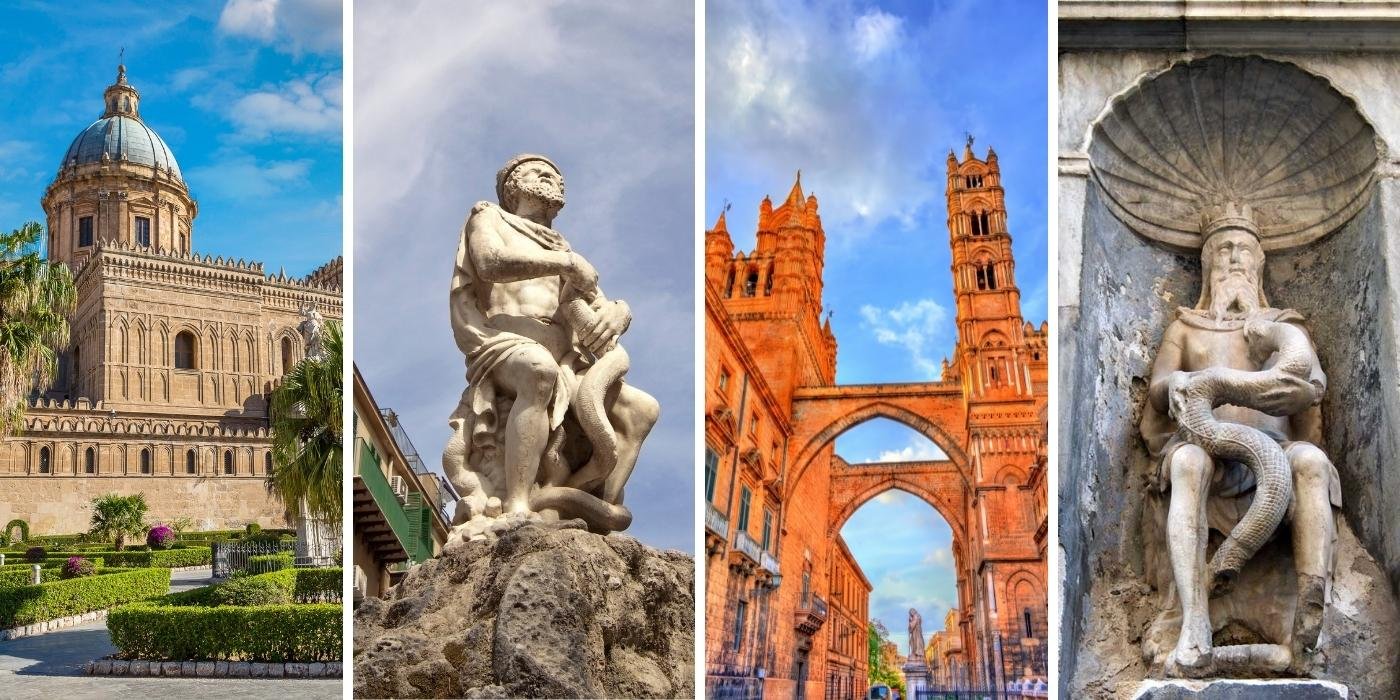

Lorena Calise
You may have seen him standing proud and imposing in the streets of Palermo. But who is that mysterious bearded man with a snake?